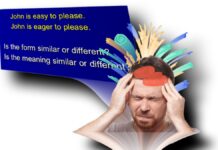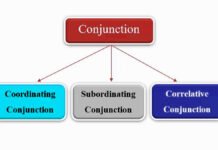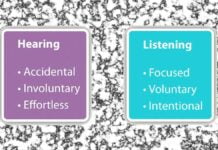In modern education, various learning theories, pedagogical approaches, and digital platforms are used to enhance teaching and learning experiences. Below is a detailed breakdown of blended learning, embodied learning, inquiry-based learning, flipped classrooms, educational platforms, and educational linguistics.
Blended Learning
Blended learning combines traditional face-to-face instruction with digital and online learning experiences. It offers flexibility and personalisation by integrating classroom teaching with technology-enhanced learning.
- Balance between in-person and online learning
- Use of digital tools (videos, quizzes, forums, virtual labs)
- Self-paced learning combined with teacher guidance
- Greater student engagement through multimedia resources
Types of Blended Learning
- Rotation Model – Students rotate between different learning stations (e.g., online learning, small group instruction).
- Flex Model – Online learning is the primary mode, with in-person support as needed.
- Enriched Virtual Model – Students complete most learning online but meet teachers occasionally.
- Flipped Classroom – Learning occurs at home via videos, while classroom time is used for discussion and practice.
Benefits
- Personalised learning – Students can learn at their own pace.
- Access to rich resources – Online videos, simulations, and digital textbooks.
- Increases engagement – Interactive content makes learning more interesting.
Embodied Learning
Embodied learning is based on the idea that learning is connected to bodily movement, senses, and physical experience. It suggests that knowledge is not just cognitive but also influenced by physical interactions.
- Mind-Body Connection – Learning is enhanced by movement and interaction.
- Experiential Learning – Physical engagement reinforces memory.
- Multisensory Approach – Incorporating touch, movement, and spatial awareness.
Examples
- Using gestures to learn languages (e.g., acting out verbs).
- Virtual reality (VR) and augmented reality (AR) to simulate real-world experiences.
- Hands-on experiments in science to deepen understanding.
- Dance and movement to understand mathematical patterns.
Benefits
- Enhances memory and recall through physical association.
- Boosts student engagement by making learning more interactive.
- Supports kinaesthetic learners who learn best through movement.
Inquiry-Based Learning
Inquiry-based learning (IBL) is a student-centred approach where learners explore questions, problems, and real-world scenarios rather than simply memorising facts.
- Encourages curiosity and critical thinking.
- Uses open-ended questions to drive discovery.
- Involves investigation, research, and experimentation.
- Problem-solving and reflection are central to learning.
Four Phases of Inquiry-Based Learning
- Orientation – Students identify problems or questions.
- Investigation – Students explore and gather information.
- Analysis – Students interpret data and draw conclusions.
- Discussion – Findings are presented, and solutions are proposed.
Examples
- STEM Projects – Building models to test scientific hypotheses.
- Case Studies – Analysing historical events based on primary sources.
- Role-Playing – Acting out scenarios to explore social issues.
Benefits
- Develops research skills and independent thinking.
- Promotes deep understanding rather than rote learning.
- Encourages curiosity and lifelong learning.
Flipped Classrooms
A flipped classroom reverses the traditional learning structure by having students study new concepts at home (through videos, readings) and use classroom time for active discussions, projects, and exercises.
- Pre-class learning (videos, articles, online resources).
- In-class discussions and problem-solving.
- Collaborative group work.
- Teacher support for deeper learning.
Benefits
- Increases student engagement through active participation.
- Allows self-paced learning since students can rewind and review videos.
- Enhances classroom interaction by focusing on discussions instead of lectures.
Teaching and Learning Management Platforms
Teaching and Learning Management Systems (LMS) digitally support course delivery, communication, and assessment.
Popular Platforms
| Platform | Features | Best For |
|---|---|---|
| Moodle | Open-source LMS, quizzes, discussion forums, grading | Universities, schools |
| Edmodo | Social media-style learning, assignments, quizzes | K-12 education |
| Google Classroom | Integrated with Google Drive, assignments, real-time feedback | Schools, online courses |
| Coursera | University-level courses, certificates, self-paced | Higher education, professionals |
| SWAYAM | Indian government’s free learning platform | Indian students, professionals |
| MOOCs | Massive Open Online Courses, flexible learning | General public, professionals |
| edX | Harvard, MIT-backed platform, university-level courses | Advanced learners, certification |
| Udemy | Professional courses, affordable pricing | Skill-based learning, self-improvement |
| Blackboard Learn | Advanced LMS, analytics, grading tools | Universities, corporate training |
Benefits
- Flexible learning – Anytime, anywhere access.
- Personalised learning paths – Adaptive assessments.
- Collaboration and feedback – Forums, discussions, peer review.
Educational Linguistics
Educational linguistics is an interdisciplinary field that applies linguistics to language teaching and learning. It focuses on how language is acquired, processed, and used in educational contexts.
- Language Acquisition – How people learn first and second languages.
- Sociolinguistics – The role of culture and society in language learning.
- Cognitive Linguistics – How the brain processes language.
- Language Teaching Methods – Approaches like communicative language teaching (CLT), task-based learning.
- Bilingual & Multilingual Education – The impact of multiple languages in learning.
Applications
- Curriculum development for language courses.
- Designing language assessments.
- Improving multilingual education in diverse classrooms.
- Enhancing language learning with technology (AI-based translators, speech recognition tools).
Benefits
- Improves language teaching methodologies.
- Supports bilingual education and cross-cultural communication.
- Enhances literacy development across different age groups.
The modern educational landscape is evolving rapidly with innovative learning strategies and digital platforms.
- Blended learning, flipped classrooms, and inquiry-based learning enhance student engagement.
- Embodied learning connects knowledge with physical experiences.
- Educational platforms like Moodle, Google Classroom, and MOOCs provide accessible and scalable education.
- Educational linguistics plays a crucial role in shaping effective language teaching.
The combination of pedagogical innovation and technology is creating a more flexible, inclusive, and effective learning environment for all students.




























